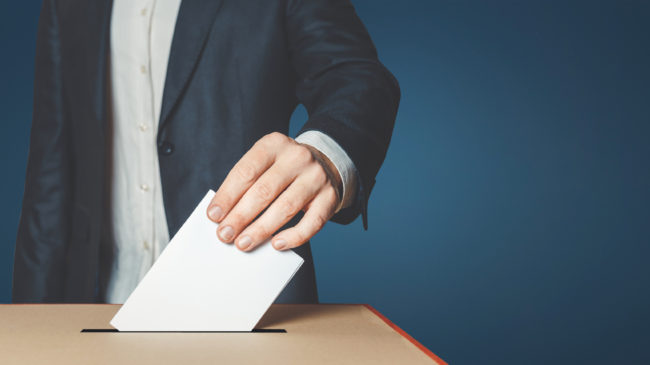Florida Amendment 3: Top-Two Open Primaries for State Offices Initiative
Summary
Florida’s Amendment 3 (2020) would change state elections from a closed system in which only party members are allowed to vote in their respective parties’ primaries to a top-two open primary where anyone can vote for any candidate of any party. Candidates from each party would appear on the same ballot and the top two candidates receiving the most votes would advance to the general election, regardless of party affiliation. Any registered voter would be allowed to participate in the primary election, not just party members. The change would impact primary elections for state legislators, the governor, the lieutenant governor, and elected executive cabinet members.
Fiscal Impact
Amendment 3 is estimated to have no significant fiscal impact on the state.
Proponents’ Arguments For
Supporters of Amendment 3 argue that the current primary system excludes voters who are not members of a major political party from participating in taxpayer-funded elections. The outcome of primary elections is therefore decided by a relatively small group of partisan voters. They suggest that closed primaries encourage candidates to appeal to this small minority rather than the broader electorate. Proponents further say that the partisan nature of primary elections causes polarization because candidates are competing for the vote of a partisan minority. They suggest that the amendment could result in moderation because it would require candidates to appeal to all voters, not just members of their own political party.
Opponents’ Arguments Against
Opponents argue that political parties are private organizations and should be allowed to determine the process by which their candidates are selected. Building a coalition of like-minded voters and nominating candidates that align with their preferences are among the core functions of political parties. Partisan primaries are an important part of that function.
Opponents argue that open primaries would weaken the ability of parties to nominate the candidates that most clearly align with their members’ beliefs. Moreover, they argue that allowing members of the opposing party to participate in their primary process could create opportunities for sabotage. Opponents also suggest that the top-two system would likely exclude minor party candidates from participating in general elections and could result in a general election between two candidates from the same political party.
Discussion
While encouraging moderation and allowing non-partisan voters to play a more significant role in elections are laudable goals, it is not clear that a top-two open primary system is effective at achieving either. There are, however, many other ways to try to improve our elections, such as ranked-choice voting, allowing minor-party candidates to participate in debates, and redrawing gerrymandered districts to be more fair and competitive.
Political parties are fundamentally private organizations with the right to set their own rules for nominating candidates. To infringe on that right is to violate the freedom of association. No matter how large or powerful the two major parties may be, the government has no role in determining the process for their primary elections. That limitation does not prevent non-partisan voters from vocalizing their dissatisfaction with major-party nominees.
Unfortunately, there is also little reason to expect that Florida’s Amendment 3 would achieve proponents’ goal of reducing political polarization. Academic research has found that top-two open primaries in Washington and California have not resulted in greater moderation among lawmakers in those states. In fact, there is some evidence that “polarization has increased and the quality of representation has declined.” One analysis suggests this is because voters find it harder to accurately differentiate between moderate and extreme candidates when multiple candidates from each party appear on the same ballot.
The top-two system in California has resulted in instances of two candidates from the same political party advancing to the general election. Those elections tend to be more “competitive” in that they are decided by closer vote margins. However, increased competition has not favored moderates over more extreme candidates. Other research suggests that same-party general elections may even result in decreased participation by voters without a candidate from their party on the ballot.
In terms of providing voters who do not belong to either of the major party with greater choice and influence, ranked-choice voting—also known to as alternative vote or instant runoff voting—provides a much better solution than top-two open primaries. Under ranked-choice voting, voters rank candidates by preference rather than casting a single vote. If no candidate wins a majority of first choice votes, the candidate with the least number of votes is eliminated. That candidate’s votes are then redistributed based on voters ranked preferences. This process is repeated until one candidate receives a majority.
Ranked-choice voting allows voters to choose their most-preferred candidate first without worrying about wasted votes or spoiler effects. This would lend voters more choice and provide greater opportunity for minor-party candidates. By contrast, minor party candidates are exceedingly unlikely to be among the top two candidates in a top-two open primary election. Considering that more than 25 percent of Florida voters choose not to register with either of the two major political parties, merely granting them access to primary elections dominated by those parties is unlikely to improve their representation.

